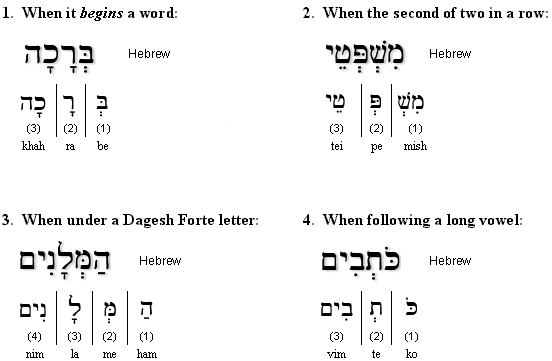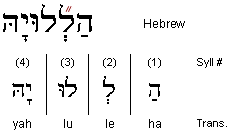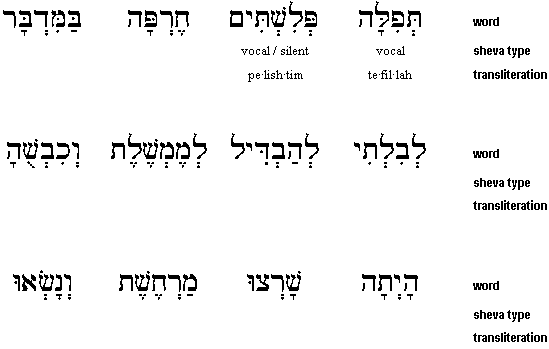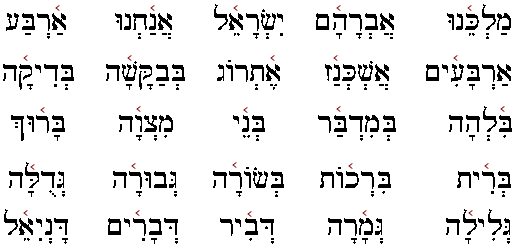|
Hebrew Vowels - |
|||||||||||||||||||||||||||||||
|
Introduction to the Sheva |
|||||||||||||||||||||||||||||||
|
The sheva is a mark placed under a letter that does not have a vowel. The sheva directly affects how to divide a Hebrew word into syllables. |
|||||||||||||||||||||||||||||||
 |
|||||||||||||||||||||||||||||||
|
|
|||||||||||||||||||||||||||||||
|
Notes: |
|||||||||||||||||||||||||||||||
|
|||||||||||||||||||||||||||||||
 |
|||||||||||||||||||||||||||||||
|
The Vocal Sheva |
|||||||||||||||||||||||||||||||
 |
|||||||||||||||||||||||||||||||
|
Note: When a Sheva is not vocal, it is silent. |
|||||||||||||||||||||||||||||||
|
Readings |
|||||||||||||||||||||||||||||||
|
Case 1: At the beginning of a word |
|||||||||||||||||||||||||||||||
 |
|||||||||||||||||||||||||||||||
|
Case 2: Second of two in a row: |
|||||||||||||||||||||||||||||||
 |
|||||||||||||||||||||||||||||||
|
Case 3: Under a Dagesh Forte letter: |
|||||||||||||||||||||||||||||||
 |
|||||||||||||||||||||||||||||||
|
Case 4: When following a long vowel: |
|||||||||||||||||||||||||||||||
 |
|||||||||||||||||||||||||||||||
|
The Sheva is also vocal when it is the first of two of the same sounding letters, such as in the word "hallelujah" (hal-le-lu-yah). Click to listen: |
|||||||||||||||||||||||||||||||
 |
|||||||||||||||||||||||||||||||
|
Exercise 1 |
|||||||||||||||||||||||||||||||
|
Each word below has one or more sheva. For each word, identify the type of sheva (vocal or silent) and provide a transliteration. The first two words are done for you. |
|||||||||||||||||||||||||||||||
 |
|||||||||||||||||||||||||||||||
|
Exercise 2 |
|||||||||||||||||||||||||||||||
|
Read the following words aloud until you can do so fluently: |
|||||||||||||||||||||||||||||||
 |
|||||||||||||||||||||||||||||||